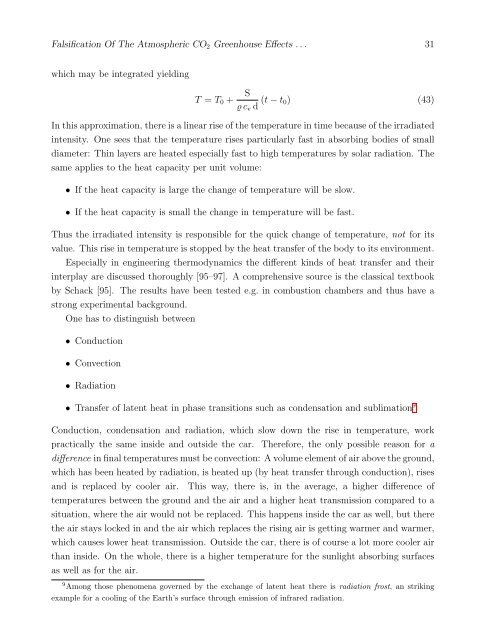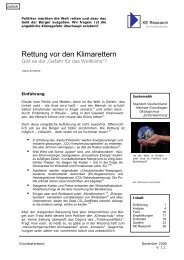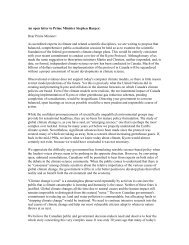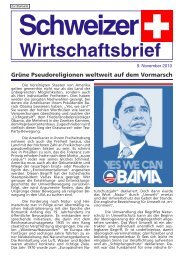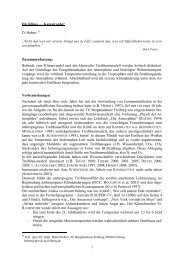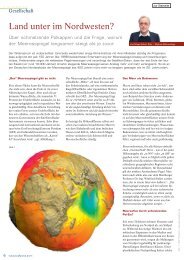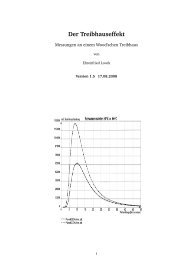Falsification Of The Atmospheric CO2 Greenhouse Effects Within ...
Falsification Of The Atmospheric CO2 Greenhouse Effects Within ...
Falsification Of The Atmospheric CO2 Greenhouse Effects Within ...
Create successful ePaper yourself
Turn your PDF publications into a flip-book with our unique Google optimized e-Paper software.
<strong>Falsification</strong> <strong>Of</strong> <strong>The</strong> <strong>Atmospheric</strong> CO 2 <strong>Greenhouse</strong> <strong>Effects</strong> . . . 31<br />
which may be integrated yielding<br />
T = T 0 +<br />
S<br />
ϱ c v d (t − t 0) (43)<br />
In this approximation, there is a linear rise of the temperature in time because of the irradiated<br />
intensity. One sees that the temperature rises particularly fast in absorbing bodies of small<br />
diameter: Thin layers are heated especially fast to high temperatures by solar radiation. <strong>The</strong><br />
same applies to the heat capacity per unit volume:<br />
• If the heat capacity is large the change of temperature will be slow.<br />
• If the heat capacity is small the change in temperature will be fast.<br />
Thus the irradiated intensity is responsible for the quick change of temperature, not for its<br />
value. This rise in temperature is stopped by the heat transfer of the body to its environment.<br />
Especially in engineering thermodynamics the different kinds of heat transfer and their<br />
interplay are discussed thoroughly [95–97]. A comprehensive source is the classical textbook<br />
by Schack [95]. <strong>The</strong> results have been tested e.g. in combustion chambers and thus have a<br />
strong experimental background.<br />
One has to distinguish between<br />
• Conduction<br />
• Convection<br />
• Radiation<br />
• Transfer of latent heat in phase transitions such as condensation and sublimation 9<br />
Conduction, condensation and radiation, which slow down the rise in temperature, work<br />
practically the same inside and outside the car. <strong>The</strong>refore, the only possible reason for a<br />
difference in final temperatures must be convection: A volume element of air above the ground,<br />
which has been heated by radiation, is heated up (by heat transfer through conduction), rises<br />
and is replaced by cooler air.<br />
This way, there is, in the average, a higher difference of<br />
temperatures between the ground and the air and a higher heat transmission compared to a<br />
situation, where the air would not be replaced. This happens inside the car as well, but there<br />
the air stays locked in and the air which replaces the rising air is getting warmer and warmer,<br />
which causes lower heat transmission. Outside the car, there is of course a lot more cooler air<br />
than inside. On the whole, there is a higher temperature for the sunlight absorbing surfaces<br />
as well as for the air.<br />
9 Among those phenomena governed by the exchange of latent heat there is radiation frost, an striking<br />
example for a cooling of the Earth’s surface through emission of infrared radiation.


